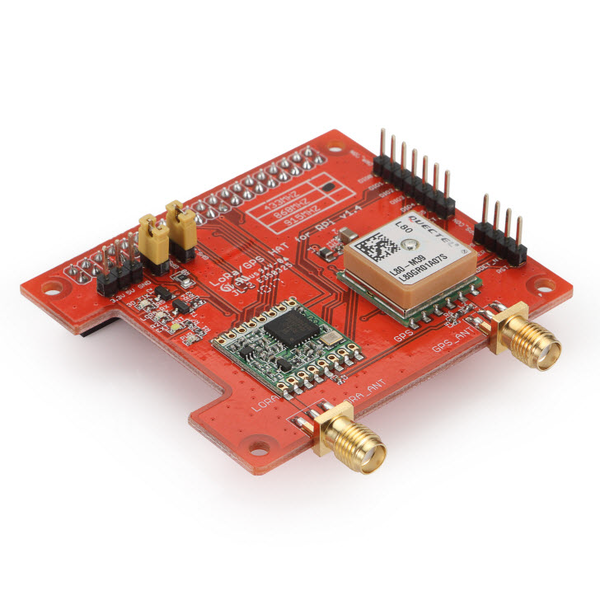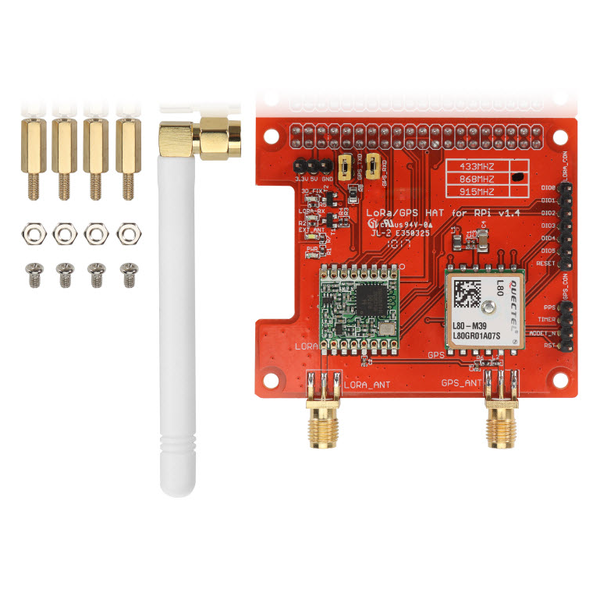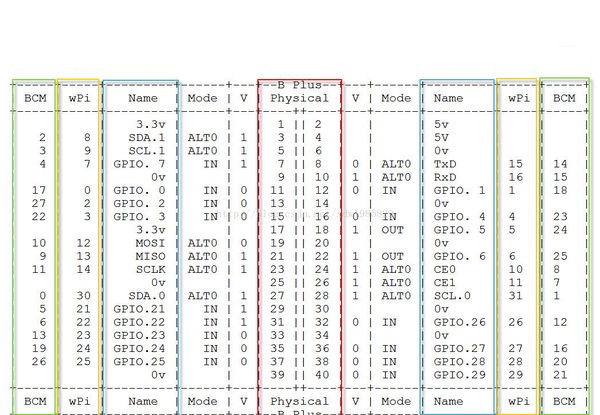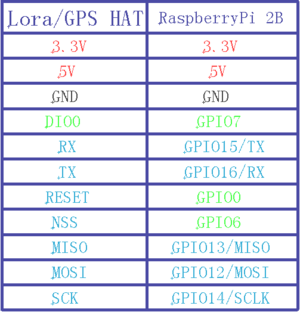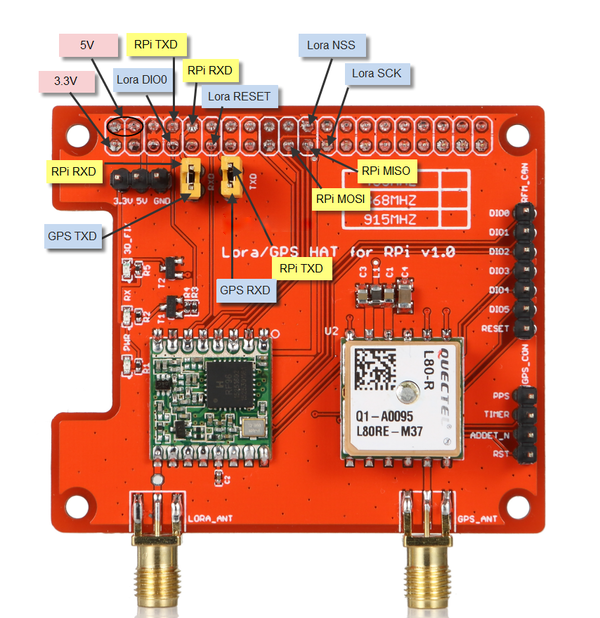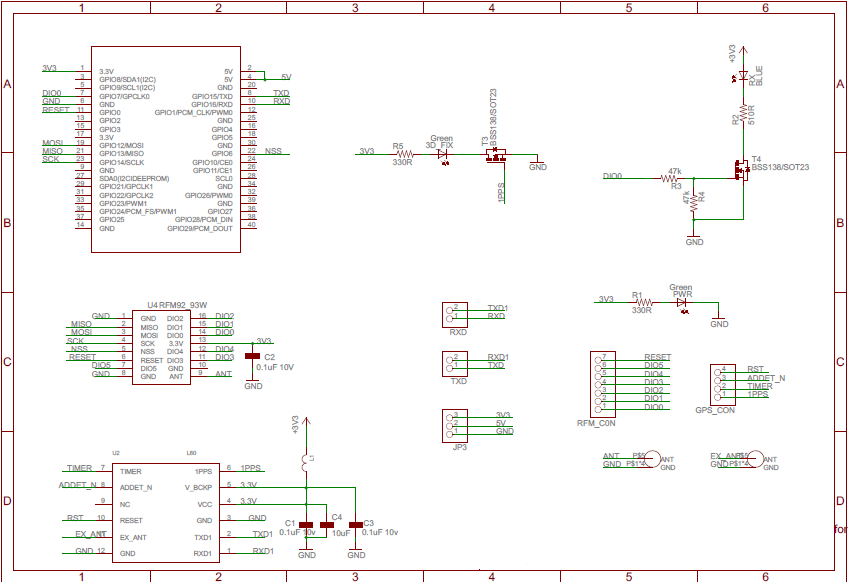Difference between revisions of "LoRa/GPS HAT for Raspberry pi"
(→Wiring) |
(→Wiring) |
||
| Line 88: | Line 88: | ||
[[File:RPi GPIO LoRa HAT.jpg]] | [[File:RPi GPIO LoRa HAT.jpg]] | ||
| + | RPi GPIO | ||
The wiring between LoRa/GPS HAT and RaspberryPi 2B: | The wiring between LoRa/GPS HAT and RaspberryPi 2B: | ||
[[File:LoRa GPS HAT wiring RaspberryPi 2B.png]] | [[File:LoRa GPS HAT wiring RaspberryPi 2B.png]] | ||
| + | LoRa HAT Wiring | ||
You can see it more careful at below: | You can see it more careful at below: | ||
[[File:LoRa HAT pin.png]] | [[File:LoRa HAT pin.png]] | ||
| + | LoRa HAT pin definition | ||
==LEDs== | ==LEDs== | ||
Revision as of 10:07, 18 May 2017
Contents
[hide]Introduction
- LoRa/GPS HAT is an expension module for LoRaWan for using with the Raspberry Pi.This product is intended for those interested in developing LoRaWAN solutions.
- The LoRa/GPS HAT is based on the SX1276/SX1278 transceiver.The add on L80 GPS (base on MTK MT3339) is designed for applications that use a GPS connected via the serial ports to the Raspberry Pi such as timing applications or general applications that require GPS information.
- The transceivers of the LoRa/GPS HAT feature the LoRa™ long range modem that provides ultra-long range spread spectrum communication and high interference immunity whilst minimising current consumption.The LoRa/GPD HAT can achieve a sensitivity of over -148dBm using a low cost crystal and bill of materials. The high sensitivity combined with the integrated +20 dBm power amplifier yields industry leading link budget making it optimal for any application requiring range or robustness. LoRa™ also provides significant advantages in both blocking and selectivity over conventional modulation techniques, solving the traditional design compromise between range, interference immunity and energy consumption.
- This board can calculate and predict orbits automatically using the ephemeris data (up to 3 days) stored in internal flash memory, so the HAT can fix position quickly even at indoor signal levels with low power consumption.With AlwaysLocate™ technology, the Lora/GPS HAT can adaptively adjust the on/off time to achieve balance between positioning accuracy and power consumption according to the environmental and motion conditions.The GPS also supports automatic antenna switching function. It can achieve the switching between internal patch antenna and external active antenna.Moreover, it keeps positioning during the switching process.
Hardware version info
Hardware Source is in: LoRa GPS HAT source
- LoRa/GPS_HAT v1.0: The first hardware release for the LoRa/GPS_HAT.
- LoRa/GPS_HAT v1.3: Add a trace from LoRa DIO1 to RPi GPIO4(wiringPi definition). Add a trace from Lora DIO2 to RPi GPIO5(wiringPi definition). They are required by LMIC library in RPi.
- LoRa/GPS HAT v1.4:
- Change SMA connector to support active antenna
- Add AADET_N LED to show if external antenna is active.
- Connect GPS PPP pin to RPi BCM pin 18
- Modify Silkscreen for GPS TXD/RXD
Specifications
Lora Spec
- 168 dB maximum link budget.
- +20 dBm - 100 mW constant RF output vs.
- +14 dBm high efficiency PA.
- Programmable bit rate up to 300 kbps.
- High sensitivity: down to -148 dBm.
- Bullet-proof front end: IIP3 = -12.5 dBm.
- Excellent blocking immunity.
- Low RX current of 10.3 mA, 200 nA register retention.
- Fully integrated synthesizer with a resolution of 61 Hz.
- FSK, GFSK, MSK, GMSK, LoRaTM and OOK modulation.
- Built-in bit synchronizer for clock recovery.
- Preamble detection.
- 127 dB Dynamic Range RSSI.
- Automatic RF Sense and CAD with ultra-fast AFC.
- Packet engine up to 256 bytes with CRC.
- Built-in temperature sensor and low battery indicator.
GPS Spec
- Based on MT3339.
- Power Acquisition:25mA,Power Tracking:20mA.
- Compliant with GPS, SBAS.
- Programmable bit rate up to 300 kbps.
- Serial Interfaces UART: Adjustable 4800~115200 bps,Default: 9600bps.
- Update rate:1Hz (Default), up to10Hz.
- I/O Voltage:2.7V ~ 2.9V.
- Protocols:NMEA 0183,PMTK.
- Horizontal Position Accuracy:Autonomous <2.5 m CEP.
- TTFF@-130dBm with EASY™:Cold Start <15s,Warm Start <5s,Hot start <1s;TTFF@-130dBm.without EASY™:Cold Start <35s,Warm Start <30s,Hot Start <1s.
- Timing Accuracy:1PPS out 10ns,Reacquisition Time <1s.
- Velocity Accuracy Without aid <0.1m/s,Acceleration Accuracy Without aid 0.1m/s².
- Sensitivity Acquisition -148dBm,Tracking -165dBm,Reacquisition -160dBm.
- Environmental:Operating Temperature -40°C to 85°C,Storage Temperature -45°C to 125°C.
- Dynamic Performance Altitude Max.18000m,Maximum Velocity Max.515m/s,Maximum Acceleration 4G.
- L1 Band Receiver(1575.42MHz) Channel 22 (Tracking) /66 (Acquisition).
Features
- Frequency Band: 868 MHZ/433 MHZ/915 MHZ(Pre-configure in factory)
- Low power consumption
- Compatible with Raspberry Pi 2 Model B/Raspberry Pi 3.
- LoRa™ Modem
- FSK, GFSK, MSK, GMSK, LoRa™and OOK modulation
- Preamble detection
- Baud rate configurable
- Built-in temperature sensor and low battery indicator
- Excellent blocking immunity
- Automatic RF Sense and CAD with ultra-fast AFC
- Support DGPS, SBAS(WAAS/EGNOS/MSAS/GAGAN)
- GPS automatic switching between internal patch antenna and external active antenna
- PPS VS. NMEA can be used in time service
- Support SDK command
- Built-in LNA for better sensitivity
- EASY™, advanced AGPS technology without external memory
- AlwaysLocate™, an intelligent controller of periodic mode
- GPS FLP mode, about 50% power consumption of normal mode
- GPS support short circuit protection and antenna detection
Wiring
You can see the RaspberyyPi2 B GPIO definition as below:
The wiring between LoRa/GPS HAT and RaspberryPi 2B:
You can see it more careful at below:
LEDs
- PWR: Power Indicate LED. Turns on once there is power.
- RX: In
